This One Really Tripped Me Up When I First Saw It. Amazing Use Of Perspective And Foreshortening In This
This one really tripped me up when I first saw it. Amazing use of perspective and foreshortening in this work though. He was a master at it, foreshor.

In Praise of Dialectics, 1937, Rene Magritte
Size: 54x65 cm Medium: oil, canvas
More Posts from Thegreenkeeper and Others
This quote speaks to me
“When I discover who I am, I’ll be free.”
— Ralph Ellison, Invisible Man (via books-n-quotes)
Help save Roman, Pass it on.
Please help save Roman!

My girl @govaxyourself is drowning in vet bills after her cat needed emergency surgery two nights ago. He’d somehow swallowed about five feet of yarn (that’s quite a lot of yarn for a cat to swallow) and it had gotten caught in his digestive tract, making him very, very ill. The cost of the surgery was already crushing, but they hadn’t even had him back home a full day before they needed to rush him back to the emergency vet with a fever and an internal infection.

Here are some of his vet bills as of now. He’s still in the hospital, and every day he has to stay only adds more fees.


@govaxyourself has maxed out her credit cards and taken out a new one to be able to pay for her cat’s medical care. The current total is nearing $6,000 already, and she’s going to have to apply for another card soon. She’s set up »a GoFundMe«, and everything raised will go directly toward paying off these vet bills and any further charges accrued. If, by some miracle of generosity, more money is raised than she needs, every last extra cent will be donated to the Humane Society where Roman was originally adopted.

Any reblogs and signal boosting you can do is greatly appreciated, and if you have the means, please consider »donating to her GoFundMe«! Every tiny bit helps so much!
These are so cool.










Stained Glass Suncatchers
Elena Zaycman on Etsy
See our #Etsy or #Stained Glass tags
I love cat sidhe folklore.
The Cait Sidhe

Celtic mythology describes Cait Sidhe as a fae spirit that takes the form of a large black cat with a white spot on its chest. People of ancient Ireland believed that cats operated somewhere between the mortal and spiritual realms.
They viewed them as guardians of the gates of the Otherworld.
a link between humans, the Otherworld and other realms. According to Celtic folklore, spirits that took the form of Cait Sidhe, a large black cat, could steal the soul of the dead before the Gods, devil or the angels could claim it. Where they take the souls nobody knows.
Northern Scottish believed hearing a Cait Sidhe scream or yowl meant you or someone in your family would die soon while the centeral and southern Scottish saw them as gentle guardians of death that guided lost souls into the place after.
The Insular Scottish believed they were the ones that warned you of death but also would grant you wishes if summoned and given offerings.
The Icelandic people have the yule cat which is put in the cait Sidhe terminology.
From what I can tell Russians and Germans held the black cats are witches in disguise belief but they also had a fearful respect if them.
Another Irish tradition derived from the ancient belief that certain spirits took the form of a cat happens on All Hallows Eve, known in Ireland as Samhain, hallows eve, all hallowsv day and just halloween on that night, spirits, fae and demons would be roaming the earth. Everyone set a dish of milk outside so that when Cait Sidhe passed your house, they would be happy with the offering and bless your home and maybe even your whole blood line. If you did not set out milk, Cait Sidhe would be displeased and disrespected so they'd leave a curse on your livestock and cause the cows to not give milk or bare young. Possibly curse your wife as well woth infertility.
Catholics and Christians took the idea of the Cait Sidhe and erased the fae part. Claiming they were demons sent from hell so they may sell innocent souls..
The mythology of the Cait Sidhe even had it's hold in the Americas. Ingenious people say the black cat as a trickster, african south Americans saw the black cat as a symbol of evil while African north Americans saw them as guardians.
White americans had mixed feelings on black cats but they always held some sort of magical power be that a protector or a trickster.
The neolithic Irish people and many Scottish also believed in the Cait Sidhe but believe that Cait Sidhe were not fairy spirits but were actually witches that could take the form of a cat. It was said that these witches could transform into a cat eight times but if they took the form of a cat on their ninth transformation, they would remain a cat. Many think it's the origin of the saying that cats have nine lives.
This is also thought the term " never cross a black cat's path " comes from since that cat may just be a Cait Sidhe or a witch.
References too the Cait Sidhe can also be found in Edgar Allen Poe's story the black cat✨
Love this

Star Maker, Remedios Varo


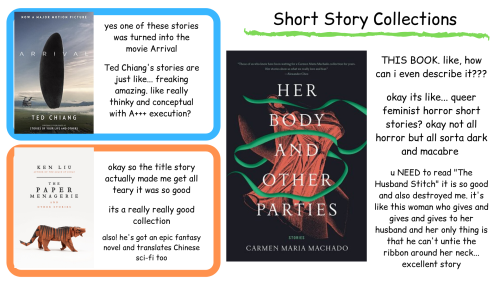

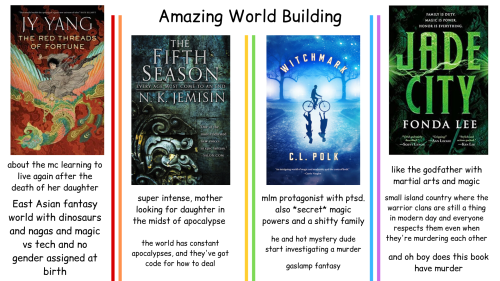
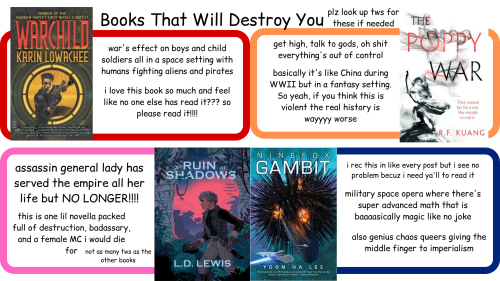
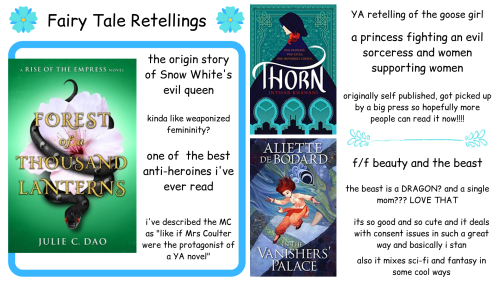
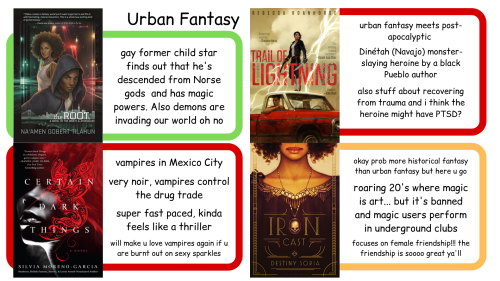


Science fiction and fantasy isn’t just a white people thing! I’ve talked about some of these books before, but here’s a new slide show entirely for SFF authors of color. Also, I was only doing one book per author. Lots of these authors have multiple books. And like it says at the end, there’s even more SFF books by authors of color but fitting everything in one post would be an impossible task.
Also, could you please not rec white authors on this post? Even if they’ve written a book starring a person of color. I want this post to be focused around the work of authors of color.
Links to more info about the books beneath the cut.
Keep reading

Edgar Allan Poe

Sylvia Playh

Neil Gaiman

Remember my friend, that knowledge is stronger than memory, and we should not trust the weaker.
Bram Stoker, Dracula
Motivational inspiration of the day










Friday Concepts on Instagram / Etsy
I would love to be more self-sufficient and have my own little homestead one day.

How much land do you really need to be self sufficient?
With a world food crisis, drought and civil unrest over escalating food prices, around the world, we all have concerns about food security and the ability to feed our own families. An info-graphic is circulating the internet that tells us that we need a full 2 acres to be self sufficient in food on a omnivore diet, implying less land if one is vegan. The problem with a graphic like this is that it discourages experimentation, and assumes a one-size-fits all family eating style. It uses yield estimates taken from mono-cultural commercial agriculture and imposes them on the homestead. This discourages people who want to attempt to be self sufficient and live a more sustainable life. 2 acres is a substantial investment in a highly productive agricultural belt or near an urban area. And this info-graphic assumes highly productive land — expensive land.
So is 2 acres a reasonable estimate? That depends where you live and what you mean by “self-sufficiency”. When Canada was being divided up in homesteading grids — it was assumed that on the Prairies an average family would need a section of land (over 1,000 acres) to be self-sufficient. In those days, self-sufficient meant to survive to the next year, without grocery stores to fall back on. In Ontario and B.C. the amount of land necessary to feed and cloth a family was considered a ¼ section — 160 acres. That area provided water, food, energy, and a livelihood. Along the St. Laurence and in the Maritimes the amount of land needed was less — due to the proximity of fishing and water. The closer one is to fresh water, whether a stream or through rainfall, the less land that is necessary to sustain a family.
Those in the North or at higher elevations need more land to be self-sufficient. Its hard to grow food — other than livestock and hay — in a growing season that’s shortened by intermittent summer frost. But it can be done. Land in these areas is cheaper, too. You will need 5 to 15 acres to be productive in a Northern area and you will have more land dedicated to raising livestock and hay and less land dedicated to vegetables and fruit.
How much land do you need?
So what’s a reasonable estimate for how much land you really need to sustain your family?
Skip the 2,000 square foot house. Its unnecessary. A smaller footprint that builds upward is a better use of space, and is easier to heat and clean. Solar panels? Possibly if you are far enough south and have a good exposure. Wind? Micro-hydro? Methane? Wood? All are possibilities to explore for energy efficiency. Each property has to be assessed individually. There is no one-size-fits-all solution — except the grid. Cut the house footprint in half.
Livestock? Skip the pigs — they produce only meat and take up valuable space. Skip the corn unless you live in the South, where your summer has the heat value to ripen corn easily. The livestock doesn’t need it and its low on food value — 2 goats and 5 chickens can live on garden surplus, grass and weeds. 5 chickens will feed a family 2 dozen eggs a week in the peak laying season. They don’t need their own dedicated space. Put them in a movable chicken tractor and let them till the garden, eating bugs and weeds. Move them every morning during the growing season and it will improve your soil quality, too.
Goats can be housed in a shed near the house, a lean to onto the house or even the back of the garage. They only need a small bedding area and can be taken for walks in the hedgerows of your neighbourhood to feed on browse. They can be given a loafing area or be tethered in different spots around the yard to help keep down weeds. Protect them from stray dogs and predators and they will give you 8 to 10 years of the highest quality raw milk for drinking, cheese, yogourt and ice-cream. They can be fed with garden waste. Or share your field peas and produce with them, in exchange for their milk. Their manure will increase the fertility of the garden space. 2 full size dairy goats will give your family a gallon of milk a day and 3 kids for 90 lbs. of meat every fall. Live in an urban area? Invest in Nigerian Dwarf goats and half the production rates, as well as the food inputs.
Instead of corn in cooler regions, grow potatoes. They offer more calories and can be grown in more climates and take up less space. You can follow a crop of potatoes with kale for a longer harvest season, even in a colder climate.
Don’t forget the orchard
Fruit and nut trees are a must. Nut trees take a while to mature but the increase in protein is beneficial to you, and your livestock — plant them if you have the space. Dwarf fruit trees will grow on a 6 foot centre and can be trellised along a fence to increase yields per space. If space is at a premium, do consider trellising them — planting 6 feet apart in a one foot wide row. One dwarf tree will yield 75 lbs. of fruit, once it is mature. 10 trees trellised along a fence with a Southern exposure, blossom sooner in spring and have an extended growing season, and will give you enough fruit for a family for jamming, canning and preserving.
Berries and small fruits take up little space and can offer high vitamins and antioxidants to your diet. If wild roses and wild strawberries grow in your area than other berries will as well.
Sunflowers are an annual crop that provide an increase in protein for your diet, and can grow on the borders of the garden, taking up very little space.
Raised beds for vegetables
Vegetables, grown in raised beds or containers, give high yields and can be rotated for 3 season gardening — greens from spinach to lettuce to kale can rotate through the growing season to keep your plate full for daily salads and vegetables. We grow all the greens we need in about 20 square feet this way. Other vegetables, like cabbage, beans, carrots and beets, need a full growing season but can be inter-cropped with flowers and herbs to feed bees, and provide medicinal plants for the family first aid kit. With raised bed gardening you could cut down the vegetable area square footage by ½ to 2/3rds Add a greenhouse and train vines to grow up instead of out and you can increase the growing season and the yields in the available space.
Community is essential
This chart fails to take into account the sharing that inevitably happens between gardeners — zucchinis, squash, lettuces and other prolific growers provide a bountiful harvest that many families can share, at the peak of the growing season.
Rabbits? Chickens? Ducks?
Put in some rabbit hutches – Each rabbit needs 2 feet by 3 ft. space. You can give them a grass run and build rabbit condos that offer them a wonderful, natural lifestyle. 3 female french angora rabbits and 1 male will provide your family with a meal of rabbit meat once a week and enough angora to keep your family in mittens and hats for the winter. They will eat your garden surplus, and grass hay. In Europe, during WWII, families with back yard rabbits would make hay by harvesting the grass from vacant lots and roadsides all summer. And they make affectionate pets, too. Are we eating our pets? No, as a farmer you make pets out of the breeding animals and give the best possible life and respect to the young that end up on your plate.
You don’t need meat every day, but you do need high quality protein every day and this kind of gardening will give you that.
Consider planting field peas for increased protein. Field peas increase the fertility of the soil and the crop is ready to harvest in August when the ground can be cleared and a second crop can be planted of either peas or a winter vegetables. The straw from peas is relished by goats and rabbits.
Aquaponics
Consider the addition of an aquaponics greenhouse in the vegetable growing area. This will yield fish fertilizer, vegetables, and fish for a well rounded diet for you and your garden — along with year round vegetables. Add a methane digester and you can supply some of your own energy needs as well. If you can grow meat and vegetables year round, you reduce your dependence on a freezer, which lowers your electrical needs.
My estimate is that in a highly productive area with adequate rainfall, the average family could raise all their food needs on 1 acre of land. Many did just this during WWII with just a large city lot, by walking their goats and moving their chickens around the vegetable garden. The key to making this work is to eat what you can grow in your climate — using heritage seeds that are adapted to your growing conditions. With more land — 5 acres — you can move from subsistence farming to commercial agriculture and begin to make some money from your productivity.
If you have more land, grow more food and expand your self sufficiency. But if you only have a balcony in a city apartment, grow where you are planted. And start in a small way to be more sufficient now. On the Joybilee Farm Facebook Page, I post periodic links to urban agricultural projects to inspire your urban efforts for self sufficiency.
One of my favorite resources for urban farm is the Urban Farm Guys. Their videos are practical step-by-step guidelines to help you harvest more food from a small amount of land. –joybileefarm.com
-
 modelecitoyen reblogged this · 6 years ago
modelecitoyen reblogged this · 6 years ago -
 camilledesmoulinsdad reblogged this · 7 years ago
camilledesmoulinsdad reblogged this · 7 years ago -
 eye-mutant liked this · 7 years ago
eye-mutant liked this · 7 years ago -
 w1zardcore liked this · 7 years ago
w1zardcore liked this · 7 years ago -
 ofthemostancientandmodern liked this · 7 years ago
ofthemostancientandmodern liked this · 7 years ago -
 robot-singularity liked this · 7 years ago
robot-singularity liked this · 7 years ago -
 mondriankite liked this · 7 years ago
mondriankite liked this · 7 years ago -
 deputy-hawk reblogged this · 7 years ago
deputy-hawk reblogged this · 7 years ago -
 beefonethousand liked this · 7 years ago
beefonethousand liked this · 7 years ago -
 readersprophecy liked this · 7 years ago
readersprophecy liked this · 7 years ago -
 thelonesomefoghorn liked this · 7 years ago
thelonesomefoghorn liked this · 7 years ago -
 symphony-in-silver reblogged this · 7 years ago
symphony-in-silver reblogged this · 7 years ago -
 langsat-lamb reblogged this · 7 years ago
langsat-lamb reblogged this · 7 years ago -
 elvashayam liked this · 7 years ago
elvashayam liked this · 7 years ago -
 anjulinanda liked this · 7 years ago
anjulinanda liked this · 7 years ago -
 chickens-chickens-chickens liked this · 7 years ago
chickens-chickens-chickens liked this · 7 years ago -
 camilledesmoulinsdad liked this · 7 years ago
camilledesmoulinsdad liked this · 7 years ago -
 williamcubed reblogged this · 7 years ago
williamcubed reblogged this · 7 years ago -
 apalatablevastness reblogged this · 7 years ago
apalatablevastness reblogged this · 7 years ago -
 apalatablevastness liked this · 7 years ago
apalatablevastness liked this · 7 years ago -
 whtaft reblogged this · 7 years ago
whtaft reblogged this · 7 years ago -
 thejourneymen-blog reblogged this · 7 years ago
thejourneymen-blog reblogged this · 7 years ago -
 hank1 liked this · 7 years ago
hank1 liked this · 7 years ago -
 artistingeorgia liked this · 7 years ago
artistingeorgia liked this · 7 years ago -
 hvit-fjaer reblogged this · 7 years ago
hvit-fjaer reblogged this · 7 years ago -
 colleen77043 liked this · 7 years ago
colleen77043 liked this · 7 years ago -
 maideee-blog1 liked this · 7 years ago
maideee-blog1 liked this · 7 years ago -
 imaginationmortimaginez liked this · 7 years ago
imaginationmortimaginez liked this · 7 years ago -
 shkayy liked this · 7 years ago
shkayy liked this · 7 years ago -
 toshiy37 liked this · 7 years ago
toshiy37 liked this · 7 years ago -
 maroonpurpleprince liked this · 7 years ago
maroonpurpleprince liked this · 7 years ago -
 m0-0-n liked this · 7 years ago
m0-0-n liked this · 7 years ago -
 owlnfoxart liked this · 7 years ago
owlnfoxart liked this · 7 years ago -
 johnfret liked this · 7 years ago
johnfret liked this · 7 years ago -
 mycatsarecuterthanyours reblogged this · 7 years ago
mycatsarecuterthanyours reblogged this · 7 years ago -
 mycatsarecuterthanyours liked this · 7 years ago
mycatsarecuterthanyours liked this · 7 years ago -
 ricardelo reblogged this · 7 years ago
ricardelo reblogged this · 7 years ago -
 ricardelo liked this · 7 years ago
ricardelo liked this · 7 years ago -
 theadmiralwho liked this · 7 years ago
theadmiralwho liked this · 7 years ago -
 sabona reblogged this · 7 years ago
sabona reblogged this · 7 years ago -
 sundaycaffe-blog liked this · 7 years ago
sundaycaffe-blog liked this · 7 years ago -
 gramofdiamonddust liked this · 7 years ago
gramofdiamonddust liked this · 7 years ago -
 woutervandevoorde liked this · 7 years ago
woutervandevoorde liked this · 7 years ago

-Just Me [In my 30s going on eternity] (A Random Rambling Wordy Nerd and an appreciator of all forms of artistic expression) Being Me- Art, Books, Fantasy, Folklore, Literature, and the Natural World are my Jam.
249 posts